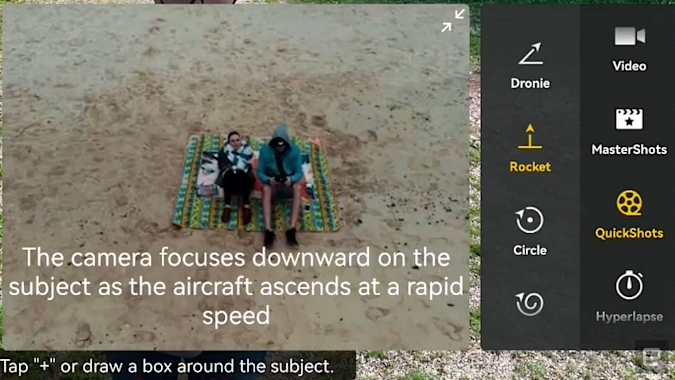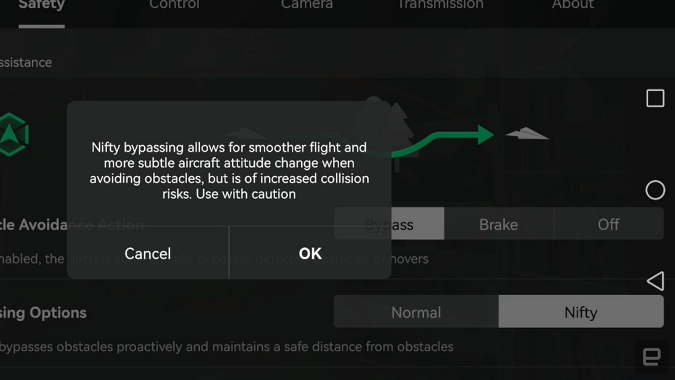When it launched last year, the DJI Mavic 3 grabbed a lot of headlines with features like a big Four Thirds sensor and a second 7X telephoto camera. But it also drew some criticism for going on sale with key features like ActiveTrack and QuickShots still not available. That meant that I and others couldn’t assess those features in our early Mavic 3 reviews. And because of that, potential buyers couldn’t get a full picture of the drone before paying up to $5,000 for one.
Following three major firmware updates in December, January and May, all the promised functions and more are finally here. Now, I’m going to test them out using the same exact drone to see how well they work. At the same time, I’ll discuss this trend of selling products before key features are available – is this good or bad?
ActiveTrack, Quickshots and other AI features
Last year, I tested the mainstream Mavic 3 (not the Cine model) in the Fly More combo package with my drone pilot friend, Samuel Dejours. At the time, we rated it highly for things like video quality, obstacle avoidance, long battery life and more. However, the coolest AI features were nowhere to be seen.
This time, we’ve got three firmware updates, with the most recent coming from the end of May. Most of the AI features like QuickShots, ActiveTrack 5, MasterShots and others arrive in January. We’re also going to check out the “Nifty” update that arrived in May, allowing the Mavic 3 to fly closer to obstacles with a smoother trajectory.
Prior to Nifty, we tested the Mavic 3’s ActiveTrack and APAS 5.0 obstacle avoidance, and found it couldn’t keep up with the smaller and cheaper DJI Mini 3 Pro. Some of that is down to the Mini 3 Pro’s size and agility, but the Mavic 3 also seemed conservative when approaching obstacles.
Steve Dent/Engadget
In Normal mode, we found that ActiveTrack worked well as long as it didn’t have to deal with many obstacles. It usually flew at the angle and distance set, giving us stable and predictable shots. So it was already a decent tool for solo creators – but it didn’t do the things DJI showed in its Mavic 3 launch video like zipping around trees while filming a guy on a mountain bike.
With Nifty mode, though, it loses that shyness. When used with ActiveTrack, it’s willing to approach obstacles very closely while following your subject. That makes it possible to film in tricker situations and get far more dramatic shots as it passes behind, under and over impediments.
It does make things more unpredictable though, of course. You can never tell what route it’s going to take to avoid obstacles and sometimes it gets lost in the woods, literally. It will also deviate from your pre-selected path, as you’d expect, but then stay there at a new altitude or camera angle. Still, this often results in some interesting and unexpected shots.

Steve Dent/Engadget
However, the extra AI derring-do can put the Mavic 3 in harm’s way, as you’re warned when you turn on Nifty mode – not ideal with a $2,000-$5,000 drone. It might be a good idea to get DJI’s $239 Care Refresh accident protection insurance if you use it frequently. An earlier release of DJI’s app warned that “you will be liable for any adverse consequences” when using the feature, but it no longer says that in the latest version.
Where Nifty is most useful is with manual piloting, we discovered. By engaging it, Samuel was able to fly in tighter spaces without the drone chickening out, while still getting basic obstacle protection. That allowed him to concentrate on the subject while the drone swooped around and passed closely by obstacles, resulting in some pretty thrilling footage.
The January update also introduced QuickShots, letting you do pre-programmed camera movements like Dronie, Helix, Rocket, Circle, Boomerang, and Asteroid. On top of that, the May update lets you shoot Log or HLG while using QuickShots, except for Asteroid mode.

Steve Dent/Engadget
These features are great for social media selfies, and actually not bad for grabbing some quick footage. For instance, if you want a perfect-looking orbit, you don’t need perfect piloting skills – just let the drone and obstacle detection do the job. Just make sure you’re in a relatively clear area.
MasterShots is a similar feature, letting you capture a series of pre-programmed moves. It then joins those shots together to create a little video set to music. It was updated in January with 4K 60 fps shooting, manual exposure adjustment and more.
Panorama offers wide-angle, 180-degree and Sphere modes, a neat but slightly cheesy feature for occasional use. Finally, the latest version of Hyperlapse does a flying time lapse with some cropping to reduce shakes and jitter. It can produce some dramatic shots, particularly for cityscapes with cloud cover and other dynamic situations. The latest version optimizes stability, making for smoother shots – but they’re not perfectly smooth if there’s a lot of wind.
